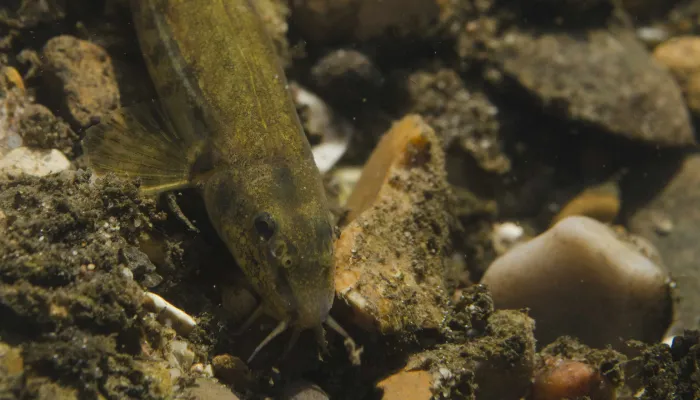| Statistics | |
|---|---|
| Length: | 6cm - 10cm |
| Weight: | 3cm - 6cm |
| Average Lifespan: | 3-5 years |
The stone loach is notoriously hard to spot - not only is it mostly nocturnal, it is also well camouflaged and can partially bury itself in the riverbed. It uses its whisker-like barbels to find its prey.
About
A small, slender fish, the stone loach can be found feeding on the bottom of clear rivers and streams, often burying itself into the gravel or sand. It feeds on small invertebrates, such as mayfly larvae and freshwater shrimps, especially at night when it uses the 'barbels' (whisker-like sensory organs) around its mouth to find prey. From April to August, females spawn around 10,000 eggs among sand, stone and vegetation.
How to identify
The stone loach is mottled olive-brown, with a greyish belly. It has six distinctive moustache-like 'barbels' around its mouth. Characterised by its smooth, elongated body and rounded fins, it is one of only two loaches in the UK; the spined loach is a rare fish, however, with much stronger markings and is found in slower, muddier water.
Did you know?
Lying still on the riverbed, partly buried and camouflaged for their own protection, stone loaches can be incredibly difficult to spot.
How people can help
The Wildlife Trusts work with planners, water companies, landowners, statutory bodies and anglers to help make our waterways and waterbodies as good for wildlife as they are for people. By working together, we can create Living Landscapes: networks of habitats stretching across town and country that allow wildlife to move about freely and people to enjoy the benefits of nature. Support this greener vision for the future by joining your local Wildlife Trust.

